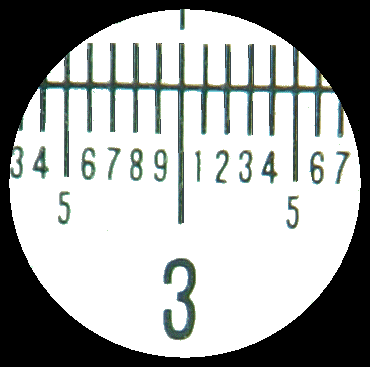Professional Gemologist Certification Course
Using a Reticle: A Guide for Gemologists
Types of Reticles
There are two types of reticles: contact and non-contact.
- Microscope eye pieces incorporate non-contact reticles. They have the singular advantage of being always in focus and the disadvantage of being the most expensive.
- The viewer places contact reticles directly on the object being measured. These cost considerably less than the non-contact type and are available individually or in sets.
Since your needs will vary, a combination of reticles is best.
Contact reticles come unattached. You can use them with any loupe or microscope. Others attach to a special hand loupe. These are almost useless for measuring things like the pavilion angle, where the part being measured is not directly in contact with the scale.
General Techniques
The following instructions are for using a contact reticle with a microscope. Using them with a loupe is nearly identical. The techniques are easily adapted.
As with any precision instrument, there are tricks to using them correctly. Most importantly, look straight down on the measurement. Looking at it from an angle will give you an inaccurate reading. Also, pay attention to which eye you’re using. If you switch eyes, you’ll change…
Donald Clark, CSM IMG
Donald Clark, CSM founded the International Gem Society in 1998. Donald started in the gem and jewelry industry in 1976. He received his formal gemology training from the Gemological Institute of America (GIA) and the American Society of Gemcutters (ASG). The letters “CSM” after his name stood for Certified Supreme Master Gemcutter, a designation of Wykoff’s ASG which has often been referred to as the doctorate of gem cutting. The American Society of Gemcutters only had 54 people reach this level. Along with dozens of articles for leading trade magazines, Donald authored the book “Modern Faceting, the Easy Way.”
Never Stop Learning
When you join the IGS community, you get trusted diamond & gemstone information when you need it.
Get Gemology Insights
Get started with the International Gem Society’s free guide to gemstone identification. Join our weekly newsletter & get a free copy of the Gem ID Checklist!
